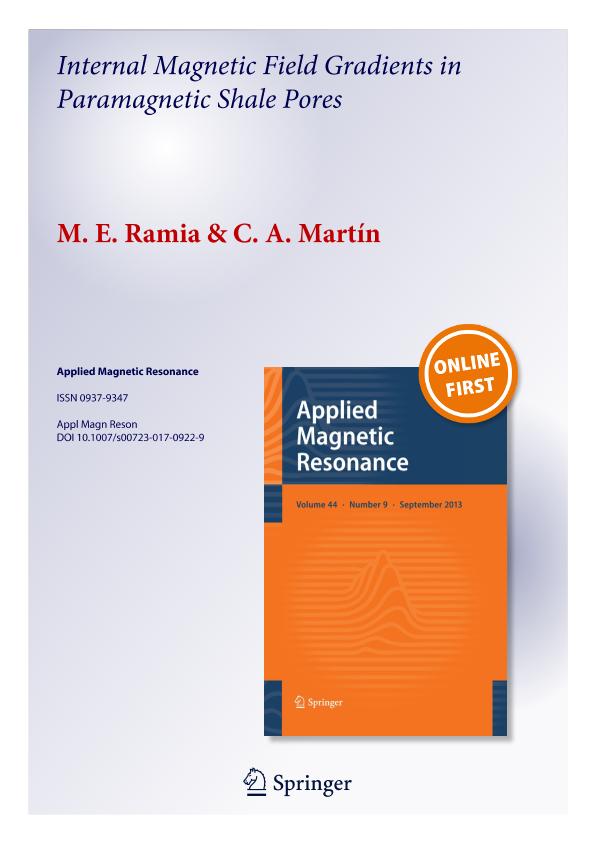Artículo
Internal Magnetic Field Gradients in Paramagnetic Shale Pores
Fecha de publicación:
10/2017
Editorial:
Springer Wien
Revista:
Applied Magnetic Resonance
ISSN:
0937-9347
e-ISSN:
1613-7507
Idioma:
Inglés
Tipo de recurso:
Artículo publicado
Clasificación temática:
Resumen
The present work involves a comprehensive study to provide a theoretical model of the internal magnetic field gradients, present in paramagnetic shale pores, to explain the main relaxation features observed by nuclear magnetic resonance transversal relaxation measurements. In the systematic analysis process of relaxation data it is necessary to know up to what extent the magnetic field gradients are generated by the logging tool and/or arise internally in the rock due to their paramagnetic impurities content. The physical model to explain the relaxation features is based on the calculation of field gradients in a planar pore with and without relaxatives walls. The results reproduce the features of the relaxation parameters in pores due to paramagnetic and tortuous walls. The mechanism that drives the relaxation process is governed by anomalous diffusion within micro-pores. These relaxation processes arise from the interactions between the protons, belonging to the liquid molecules and the pore walls, whose structure is characterized by both large tortuosity and abundance of paramagnetic impurities, giving rise to local strong time dependent magnetic field gradients. The theoretical results are compared with those obtained experimentally to validate the relaxation model. The experimental data were gathered from a sample belonging to the “Vaca Muerta” formation of the Neuquén basin, Argentina.
Palabras clave:
NMR
,
PETROPHYSICS
,
SHALES
Archivos asociados
Licencia
Identificadores
Colecciones
Articulos(IFEG)
Articulos de INST.DE FISICA ENRIQUE GAVIOLA
Articulos de INST.DE FISICA ENRIQUE GAVIOLA
Citación
Ramia, Maximo Elias; Martin, Carlos Alberto; Internal Magnetic Field Gradients in Paramagnetic Shale Pores; Springer Wien; Applied Magnetic Resonance; 48; 10; 10-2017; 1075-1091
Compartir
Altmétricas




